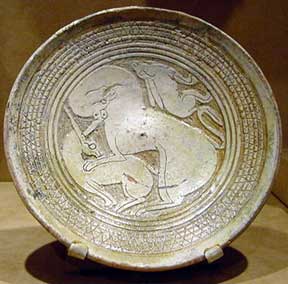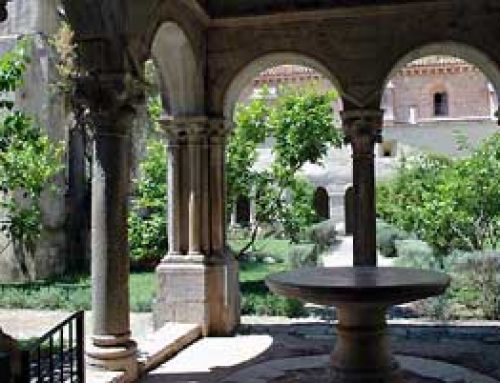
(Metropolitan Museum, New York)
After the fall of the western part of the Roman Empire, the remaining part of the Roman empire in West Asia and Egypt kept on using Roman red pottery. But by around 700 AD, after Heraclius, Byzantine potters began to make tin-glazed pottery, just like in the neighboring Umayyad empire. This glazed pottery looked a lot like the Islamic glazed pottery, and continued to be used all through the rest of the Byzantine empire.

Sgraffito style bowl, ca. 1300 AD (Metropolitan Museum, New York)
This bowl, for instance, is done in the sgraffito or “scratched” style, where you scratch through the thick glaze to make a pattern. This style was also popular in the Abbasid empire.
Glazed pottery had two big advantages. First, it was easier to wash because the surface was smoother, so food didn’t stick to it so much. And second, it made Byzantine pots look more like expensive, imported Islamic pottery and Chinese pottery.
Learn by doing: make a clay pot and glaze it
More about Islamic pottery
Bibliography and further reading about the history of pottery:




